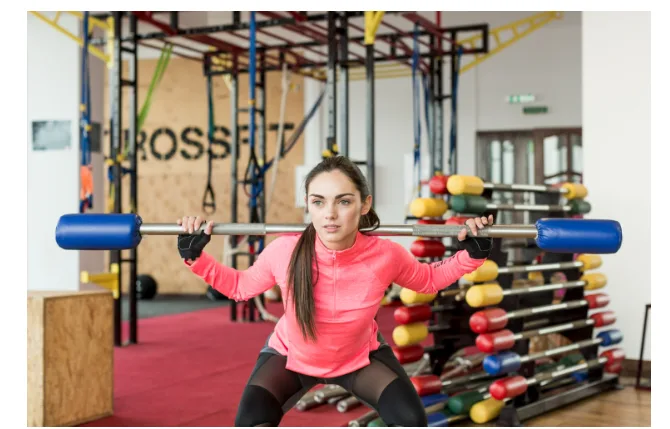Strength Training for Women in Their 30s, 40s, and 50s: A Phase-by-Phase Guide

“Strength training isn’t about lifting the heaviest weight—it’s about lifting yourself into a stronger, healthier, and more confident version of you.” – Neely, Founder of Sweat Society
Quick Answer: Why Women in Their 30s, 40s, and 50s Need Strength Training
Strength training becomes more important with each decade. In your 30s, it’s about building a strong foundation. In your 40s, it’s about preserving muscle and protecting joints. In your 50s, it’s about maintaining independence, bone density, and vitality. With the right plan, you can thrive at every age.
My Journey with Women’s Strength Training
As the owner of Sweat Society here in San Diego, I’ve trained women across all stages of life. What I’ve learned is this: your 30s, 40s, and 50s aren’t roadblocks—they’re opportunities. Strength training isn’t about looking like a bodybuilder. It’s about reclaiming your energy, improving your health, and building resilience so you can keep doing what you love, for decades to come.
Why Strength Training Is Essential for Women
Strength training is often overlooked, but it’s one of the most powerful tools for women’s health.
- Muscle Preservation: Women naturally lose muscle mass with age, starting in their 30s.
- Bone Density: Weight-bearing exercise helps prevent osteoporosis.
- Metabolic Boost: More muscle means a faster metabolism, even at rest.
- Confidence & Mental Health: Moving weight builds more than muscles—it builds mindset.
Strength Training in Your 30s: Building the FoundationWhat’s Happening in Your Body
In your 30s, you’re still strong and adaptable. But this is when muscle mass and metabolism begin to gradually decline if you don’t actively work to preserve them.
Training Goals in Your 30s
- Build lean muscle mass
- Improve mobility and flexibility
- Develop consistent workout habits
- Balance hormones with movement
Best Exercises for Your 30s
- Squats and lunges (for lower body strength)
- Deadlifts and hip thrusts (for core and glutes)
- Push-ups and bench presses (for upper body)
- Functional training with kettlebells and resistance bands
Pro Tip from Me
This is the perfect decade to learn proper technique. Don’t chase numbers on the bar; chase control, stability, and form.
Strength Training in Your 40s: Preserving and ProtectingWhat’s Happening in Your Body
Hormonal shifts begin in your 40s, and recovery can take longer. Many women experience perimenopause during this phase. Muscle preservation and bone density become critical.
Training Goals in Your 40s
- Maintain muscle mass and prevent loss
- Support joint health and mobility
- Balance strength with recovery
- Reduce stress with mindful movement
Best Exercises for Your 40s
- Strength circuits with compound movements (squats, rows, overhead presses)
- Pilates or yoga for balance and flexibility
- Low-impact cardio paired with resistance training
- Core stability work to prevent back pain
Pro Tip from Me
In your 40s, recovery is just as important as your workouts. Prioritize rest, mobility work, and quality nutrition.
Strength Training in Your 50s: Thriving with Strength and VitalityWhat’s Happening in Your Body
Menopause can accelerate muscle and bone loss, but strength training can slow, or even reverse, these changes. At this age, the focus is on functional strength—training to move well in daily life.
Training Goals in Your 50s
- Maintain independence and daily functionality
- Strengthen bones and joints
- Improve posture and balance to prevent falls
- Support heart health and mental clarity
Best Exercises for Your 50s
- Bodyweight movements (modified push-ups, squats to a chair)
- Resistance band training for joints
- Strength training machines for safety and stability
- Walking or light jogging combined with strength work
Pro Tip from Me
It’s never too late. I’ve seen women in their 50s start strength training for the first time—and thrive. The key is slow progression and consistency.
Phase-by-Phase Training BlueprintIn Your 30s:
- Frequency: 3–4 strength sessions per week
- Style: Mix of free weights and bodyweight training
- Focus: Technique and progression
In Your 40s:
- Frequency: 3 strength sessions per week + mobility training
- Style: Circuits with added recovery time
- Focus: Maintaining muscle and joint health
In Your 50s:
- Frequency: 2–3 strength sessions per week
- Style: Functional, low-impact strength with stability work
- Focus: Bone health, posture, and independence
Nutrition for Strength at Every StageIn Your 30s
- Protein-rich meals to support muscle growth
- Balance of carbs and fats for energy
- Hydration as a priority
In Your 40s:
- Anti-inflammatory foods to support joints
- Fiber-rich foods for digestion
- Supplementation (like vitamin D and calcium) if needed
In Your 50s
- Higher protein to preserve muscle
- Foods rich in omega-3s for heart health
- Mindful eating to balance energy levels
Common Myths About Women and Strength Training“Strength training makes women bulky.”
No, it makes women strong, lean, and confident.
“It’s too late to start after 40 or 50.”
Absolutely not. I’ve trained women in their 50s who made more progress than they ever expected.
“Cardio is more important than weights.”
Both matter, but strength training supports longevity in a way cardio alone cannot.
How I Help Women at Sweat Society
At Sweat Society, I combine personal training, holistic nutrition, functional medicine, and rehab therapy to create customized programs. Every woman’s body is unique, and every program I design reflects that.
Stronger at Every Stage
Strength training in your 30s, 40s, and 50s is about so much more than fitness—it’s about resilience, vitality, and confidence. The beauty of this journey is that your body is capable of change at any age. And when you train with intention, you don’t just get stronger—you become unstoppable. Visit us online: https://www.sweatsocietyfitness.com/
